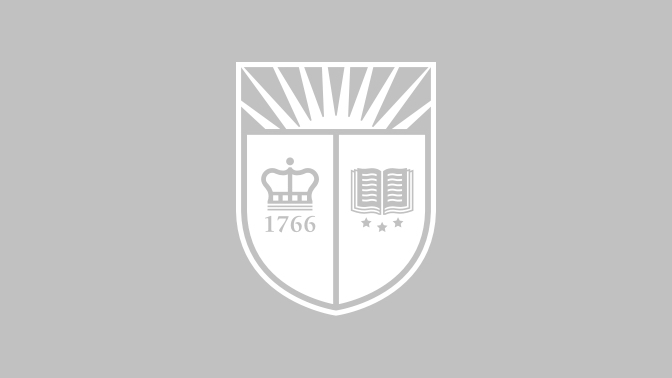Important considerations for planning remote instruction
Be sure to check with your school and/or department for additional details that could impact your teaching, including expectations for classes, as your unit administrators could want all classes handled in the same way to ensure the student learning experience stays as intact as possible.
Getting Started
If the university is closed for a prolonged period or you have students who need to attend class remotely, the following guide will help you prepare to continue teaching remotely. While there are plenty of ways to ensure the continuity of your course, the appropriate strategy will be determined by:
- The size, structure, and type of course
- Your familiarity with learning technologies
- The anticipated duration of the closure
- Readily available course-related content
Step 1: Be Aware
It is critical that you are familiar with the most updated information being provided by your department, the school, and the university.
- Be familiar with the messages that the university, provosts, and deans have sent to the chairs and faculty about academic continuity.
- Check with your department chair, graduate or undergraduate director, and school to find out what resources they are recommending for faculty.
- Review the “best practices” that your dean and chair have developed for academic continuity.
- A critically important element in planning alternatives to in-person classes is to maintain awareness of technological limitations that students may face in participating in classes remotely.
Step 2: Communicate
Remember that you are a conduit between your students and the university. While they are sure to receive regular updates from the university, the school, and/or your department, students will most likely rely on you to help them understand the implications of the event, especially items related to your course.
Please, however, refer students to the official Rutgers coronavirus website for information about any non-academic aspects of Rutgers’ response to the situation, as well as for advice on how to find health-related information.
Ensure that you have a valid method to communicate with your students, such as email addresses for the students in each of your classes, lab sections, or other courses, and that you have ready access to this information offsite.
Send a message to students immediately and announce that students will need to watch for messages from you.
Student Communications Strategy
- Although your students are likely to have received a notification about a change in operating status, it is still recommended that each instructor reach out to their students regarding their course specifically. Even if you do not have a plan in place, providing students with the following information will ease anxiety and establish a mechanism for future updates.
- You will want to keep students aware of any changes to assignments, due dates, quizzes, or procedures impacting the course.
- Early and frequent communication can help reduce panic and eliminate duplicative questions from individual students.
- Keep track of frequently asked questions and be sure to include answers to these questions on your course site or through your classwide communications.
- Provide students with information on how to submit course assignments via the course website. If this is not feasible, make sure your students have a valid email address for you so that they can submit assignments to you that way.
- Communicate with students early and often to give them information about changes to your course.
- Let students know how often they can expect to hear from you (e.g., daily, weekly, etc.) and through what channels (e.g., email, Canvas announcements).
- Explain to students how they can communicate with you (e.g., email, Canvas inbox).
- Inform students of the expectations for attendance and participation under your modified teaching plan.
- Tell students how the class will operate during the period of instructional modification.
- Direct students to campus resources for addressing noninstructional needs (e.g., health and wellness, other campus websites).
- Tell students to monitor official campus communication for updates.
Sharing Course Materials
- The easiest way to deliver readings, assignments, videos, etc. to your students remotely is through Canvas..
- If you are not currently using Canvas for your course and you are unsure which one to use, you may want to check with your department and/or colleagues to determine what is the right system for you.
- While it is not recommended, if you chose not to use a learning management system, you could also distribute and collect materials via collaboration tools that you are familiar with or email.
Recording and Delivering Lectures
- If you’d like to continue to deliver lectures to your students during the change in operating status, the best way to do so is by recording and distributing your lecture through your LMS using Kaltura. This allows students to watch it when they are available and reduces the chances of a student missing out on the lecture.
- Kaltura allows you to record a presentation that includes PowerPoint, your desktop, your face via webcam, and/or just your voice and can be accessed through Canvas.
- Kaltura will automatically transcribe the audio into captions to ensure that the video is accessible.
Step 3: Adjust Goals, Priorities, and Expectations
When planning to take your course remotely during a prolonged change in operating status, you will want to look at what is feasible. Based on the anticipated duration, what can you realistically accomplish? Is your original course schedule and syllabus still attainable? What sort of knowledge do you have of learning technologies that can be leveraged during the closure? What regularly occurring activities will have to be adapted or changed in order to be facilitated remotely? Is your hope that students will keep up with the existing reading and assignments or are you hoping to generate discussion or deliver synchronous sessions?
Step 4: Ensuring Access to Necessary Technology
While there will be special circumstances that may require additional technologies, in general, the following equipment will make it possible for you to move your class online:
- Computer: Laptop or desktop computer. A tablet may be used in some cases.
Internet Connectivity: Preferably a high-speed connection such as Comcast, FIOS, or Optimum. You may also use a wireless hotspot through your mobile provider. - Microphone (optional): This may be built into your device, but an external microphone or headset will provide better sound.
- Webcam (optional): Many computers have one built-in, but you can easily connect an external USB camera.
Many university classrooms make this technology available but, if you are unable to use a classroom and do not have this equipment available, please reach out to your department or school for guidance.
Step 5: Utilizing Technology
Given that a change in status can happen at any time, you may not have much time to prepare or make major adjustments to your course. In this case, you may want to pick tools and approaches that your students are already familiar with. While creating a course site in an LMS might be an effective way of communicating and facilitating learning during a closure, it may not be the best time to use complex tools that have a steep learning curve. Make it work for you and use the tools that you’re most familiar with.
If you have not already done so, you may want to set up a course webpage in Canvas and post the syllabus and class assignments. Contact Academic Technology Services (ATS) at atshelp@newark.rutgers.edu if you need assistance.
If you are already utilizing Canvas let students know that you will be pushing future announcements through these tools. If you are not using an LMS, you can always communicate with your students through email or other established channels. While elements of your course are sure to change, try to keep things as consistent as you can.
All remote courses and course materials must be made accessible as dictated by the Rutgers University IT Accessibility Policy. Course content is accessible to the degree that every student can easily access and navigate materials and assignments, submit assignments, and successfully use course tools and applications. Building accessible courses and course content is a key part of Universal Design for Learning.
For more accessibility information please visit the Office of IT Accessibility site.


